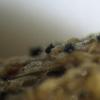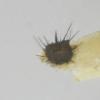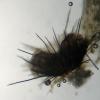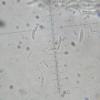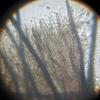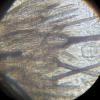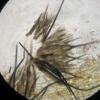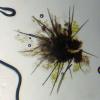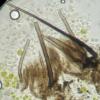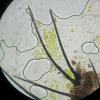
27-11-2025 11:46
Thomas Læssøehttps://svampe.databasen.org/observations/10493918

29-11-2025 08:40
 Andreas Millinger
Andreas Millinger
Hello,on a splintered part of a branch on the grou

28-11-2025 16:45
Nogueira HéctorNovember 23, 2025 Requejo de Sanabria (León) SPAI

25-11-2025 14:24
Thomas Læssøehttps://svampe.databasen.org/observations/10490522

17-09-2025 10:50
Heather MerryleesHi there!I am hoping for any advice on the identif

27-11-2025 15:41
Thomas LæssøeSpores brownish, typically 4-celled; 26.8 x 2.4;

27-11-2025 12:01
Thomas Læssøehttps://svampe.databasen.org/observations/10496727

27-11-2025 11:31
Thomas LæssøeCollectors notes: Immersed ascomata, erumpent thro

23-09-2025 13:31
Thomas Læssøehttps://svampe.databasen.org/observations/10534623

26-11-2025 18:13
The entire run of Mycotaxon is now available throu
chaetomium
hannie wijers,
11-08-2012 14:59
Yan Yinh,
11-08-2012 16:51
Dinemasporium on dung
Dear Hannie Wijers,
this is not a species of the genus Chaetomium.
The limited information are more likely to the genus Dinemasporium, maybe Dinemasporium fimeti Plowr. & W. Phillips 1876.
Dinemasporium is the anamorphic stage of the genus Phomatospora. Phomatospora coprophila Richardson 1972 is coprophilous and probably the best known species of dung.
I do not know whether the two taxa are genetically connected. Likewise gramincole species are possible.
The size and number of septa of the conidia should add here yet.
Yan
The genus Phomatospora and its anamorph stages are not yet sufficiently investigated and verified genetically. Standard literature, for example, Sutton and Ellis & Ellis give only a rough outline, but no further help. In addition, we need new studies to see whether the species Pseudolachnea has a permission. Collections on manure, such as those of you who are often found. I know a lot of samples on the dung of rabbits and hares. If you want to work seriously and accept the above reasons, would be the correct name of your collection: "Dinemasporium-like".
this is not a species of the genus Chaetomium.
The limited information are more likely to the genus Dinemasporium, maybe Dinemasporium fimeti Plowr. & W. Phillips 1876.
Dinemasporium is the anamorphic stage of the genus Phomatospora. Phomatospora coprophila Richardson 1972 is coprophilous and probably the best known species of dung.
I do not know whether the two taxa are genetically connected. Likewise gramincole species are possible.
The size and number of septa of the conidia should add here yet.
Yan
The genus Phomatospora and its anamorph stages are not yet sufficiently investigated and verified genetically. Standard literature, for example, Sutton and Ellis & Ellis give only a rough outline, but no further help. In addition, we need new studies to see whether the species Pseudolachnea has a permission. Collections on manure, such as those of you who are often found. I know a lot of samples on the dung of rabbits and hares. If you want to work seriously and accept the above reasons, would be the correct name of your collection: "Dinemasporium-like".
Norbert Heine,
11-08-2012 16:53

Re : chaetomium
Hi Hannie,
this is no Chaetomium, but maybe Pseudolachnea hispidula.
Norbert
this is no Chaetomium, but maybe Pseudolachnea hispidula.
Norbert
hannie wijers,
11-08-2012 17:39
Re : chaetomium
Wow, what a quick answer this is. I didnt' measure the length of the conidis. I'll look one of these days if there is new material in the dung. I'll look for thes suggestions bothe of you said. Does any of you know if thers is some lecture about these genus?
Yan and Norbert thanks a lot.
Hannie
Yan and Norbert thanks a lot.
Hannie
hannie wijers,
11-08-2012 20:35
Re : chaetomium
Thank you. I took a quick look at this moment, tomorrow I want to look further on the web.
Hannie
Hannie
